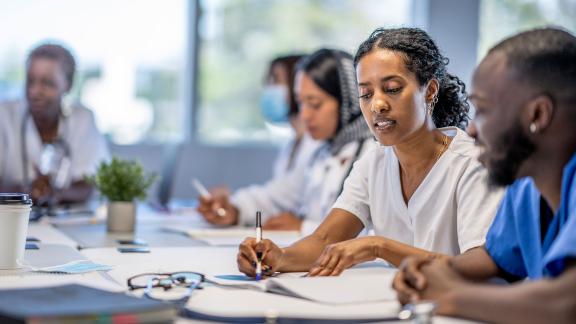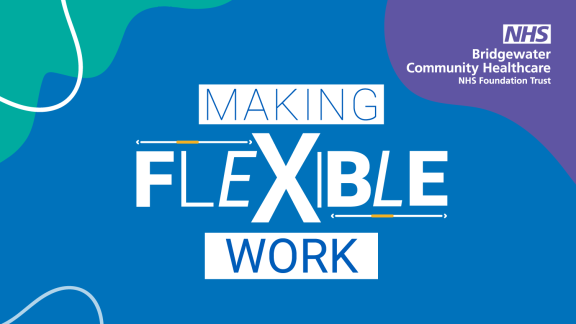Implementing innovative flexible working to combat escalating demand on services

Key benefits and outcomes
- Remote flexible working opportunities for experienced clinical staff.
- Flexible working and skills development for junior clinical staff, including imaging support workers to support patient care onsite.
- An additional 750 patients scanned remotely over a two month period.
- 85 per cent, or higher, utilisation rate of MRI assets.
- 75 per cent reduction in did not attend (DNA) rate for remote scanning lists in comparison with conventional hours service.
- 90 per cent of patients received diagnostic test within three weeks of referral.
What the organisation faced
Imperial College Healthcare Trust (ICHT) MRI service is based across four sites, using 12 MRI scanners. The service operates 75 hours a week on acute sites, and 84 hours a week at the Community Diagnostic Centre (CDC).
Despite high activity levels, the imaging service experienced substantial delays in offering MRI appointments. The backlog was attributed to several factors including a high demand for scans, finite scanner capacity and the challenge of unplanned downtime of ageing MRI scanners.
An option to improve capacity to meet demand was to extend the operational hours of the current service. To deliver an extended service the trust needed to increase their staffing levels, in a workforce with national challenges around recruitment and retention.
What the organisation did
Recognising an opportunity to innovate, the trust introduced a remote scanning technology platform which enabled trained diagnostic radiographers to access and operate scanners remotely. The service, very extended scanning pilot (VESP), provided additional capacity for diagnostic scanning between 8pm and midnight daily, and increased the accessibility of MRI appointments for patients. The scheme utilised a new staffing model for both on-site and remote working with diagnostic radiographers and imaging assistants working flexibly.
Ahead of introducing the new service an extensive engagement exercise was undertaken with patients and a multi-disciplinary team to co-design a service to best fit the needs of its key stakeholders.
This included:
- A survey of patients to provide quantitative evidence of a preference for an extended hours service.
- Consultation with subject matter experts to developed an approach to ensuring patient safety and drive productivity, in line with recent NHS focus in this area.
- Collaboration with IT to allow remote workers access to the trust’s IT infrastructure using their own device to remote scan securely.
- Working with the regional imaging academy and local clinical teams, including healthcare scientists to develop and deliver an intensive six week training programme.
Challenges
Given this was a truly innovative change, and a first for the NHS (remote scanning technology had not been used in this way previously), the first challenge was how to introduce the technology safely with the necessary support from the stakeholders.
Whilst the trust used a patient survey as a basis for offering an extended hours service, they also had to consider the wellbeing of staff in delivering the service. Through engagement with human resources, industrial relations representatives, and multidisciplinary workshops they collaboratively developed an enticing opportunity for staff.
The current radiographer workforce faced high levels of burnout due to demanding schedules and a lack of flexible working options, leading to difficulties in retaining skilled staff. Similarly, the support workforce in imaging faced high levels of turnover due to lack of defined career progression and role satisfaction.
By offering robust upskilling to on-site radiographers and imaging support staff, including those not typically involved in this area, the trust has established a new internal talent pipeline. Remote working radiographers are also able to volunteer for bank shifts, which coincide well with existing preferred long day shift patterns.
MRI safety was a key concern, which was tackled through an intensive training and education programme for those on-site including the use of simulation and dedicated sessions with MRI safety experts.
A rigorous governance framework provided clarity around roles and responsibilities for those on-site and those working remotely.
Finally, to support the new ways of working and increased levels of activity a robust and reliable IT infrastructure was established.
Results and benefits
- In the initial three month period the remote scanning pilot delivered 750 additional MRI examinations from a community diagnostic setting.
- 12 senior MRI radiographers have participated as remote workers, using the existing IT infrastructure, through their own devices.
- Four junior radiographers have completed an intensive training and education programme to fulfil their roles on site.
- The service is delivered from a CDC, a key aspect of the Richards report, 2020 and has delivered additional outpatient capacity in line with getting it right first time (GIRFT 2020) recommendations.
- Patient care is delivered safely, with a significantly improved DNA rate and outstanding feedback from patients.
- Imaging staff, including radiographers and imaging support workers have responded positively to the opportunity to work flexibly.
Takeaway tips
- Ensure full and comprehensive engagement with stakeholders around feasibility and practicality.
- Establish clear governance structures that define roles, responsibilities and safety protocols for both on-site and remote teams.
- Secure strong IT engagement to identify and use existing IT infrastructure in secure ways to facilitate remote working and minimise the need for entirely new systems.
- Think outside the box in terms of workforce, invest in robust training programs to upskill staff not traditionally involved in MRI, create new talent pipelines and addressing workforce shortages.
To find out more about this innovative work please email philip.gregory5@nhs.net or if you'd like to showcase work from your organisation please contact staffexperience@nhsemployers.org


